
The Single Leg Burpee is a challenging and fun plyometric(jump training) exercise that you should include in your fitness routine. It will help you to increase your cardiovascular endurance and will help you to strengthen your Chest, Shoulders, and Core.
The One-Legged Burpee gets your heart rate up fast making them a great addition to High-Intensity Interval Training programs.
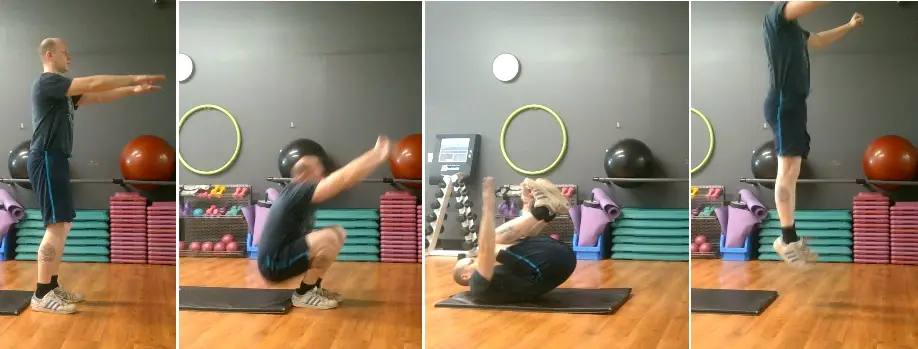
The Reverse Burpee is a fun plyometric(jump training) exercise to include in your routines. It will help you to develop your leg strength while giving your core a good workout at the same time.
Plyometrics are a great way to get your heart rate up fast making them a great addition to High-Intensity Interval Training programs.
How to Guide
Step by Step Description
Step 1: Move to a standing position with your feet approximately hip-width apart. Extend your arms up pointing towards the ceiling or out in front of you and tighten your core.
You are now in the starting position.

Just because you do not have access to weights does not mean your shoulders development has to suffer.
Unlike the traditional version of the pushup, the push back push up variation is going to focus on your shoulders primarily, and your chest is going to be one of the secondary muscle involved.
Since this is a calisthenic exercise, it is a useful way to add some shoulder training for people who exercise at home or on days when you cannot make it to your local gym. As an added benefit using this exercise can also give your core a decent workout at the same time.
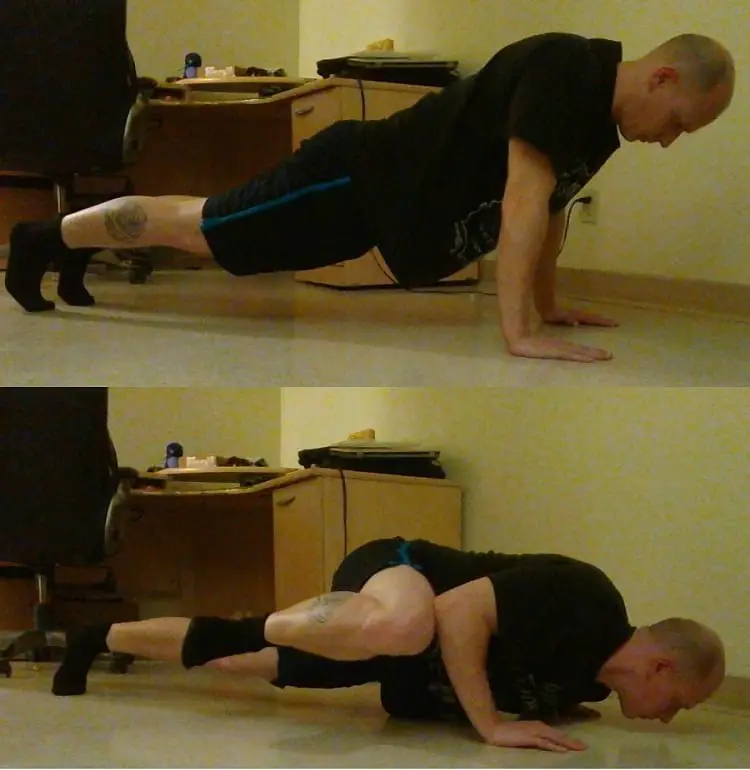
The Spiderman Pushup is an excellent way for you to build your pressing muscles while working on building up your abs and obliques at the same time.
So if you are getting bored of the traditional push-up and looking for a new more challenging variation, then this exercise if for you.
Step 1: Put the palms of your hands flat on the floor directly under your shoulders. Have your fingers pointing directly straight ahead and extend your legs back. Your body should now form a straight line from your shoulders to your heels.
Step 2: Bend at your elbows lowering your body towards the floor. Make sure your arms have a 45-degree angle with the body or less. As you lower your body, fold in your left knee and touch your elbow with it.
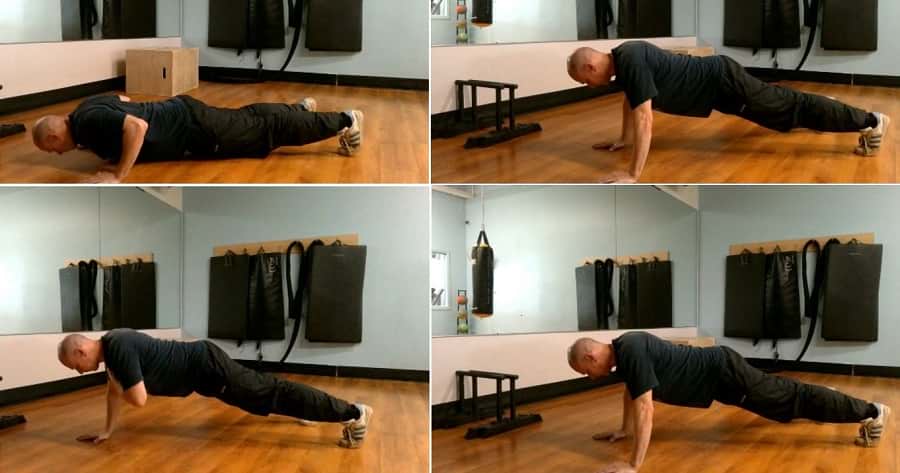
Step 1: Move to the ground and lie face down on the floor with your body straight. Put your palms face down on the floor. Your fingers should be pointing straight ahead. You are going to put the palms of your hands directly under the shoulders.
You are now in the starting position.
Step 2: Tighten your entire body and keep it tight throughout the exercise. Extend at your elbows pressing your body to the top of the push-up position. Your body should form a straight line from your head to your heels.
Step 3 Version A: Lift one of your hands off of the ground and touch the opposite shoulder with the palm of your hand. Return your hand to the floor. Now raise your other hand off of the ground and tap the opposite shoulder with the palm of your hand. Return your hand to the floor.

Step 1: Lie face down on the floor with your body straight. Put your palms face down on the floor. Your fingers should be pointing straight ahead. You are going to use a slightly wider than shoulder width positioning (your hands should be on the outsides of your shoulders).
Step 2: Extend at your elbows raising your body to the top of the push-up position. Your body should form a straight line from your head to your heels. Tighten your entire body and keep it tight throughout the exercise.
You are now in the starting position.
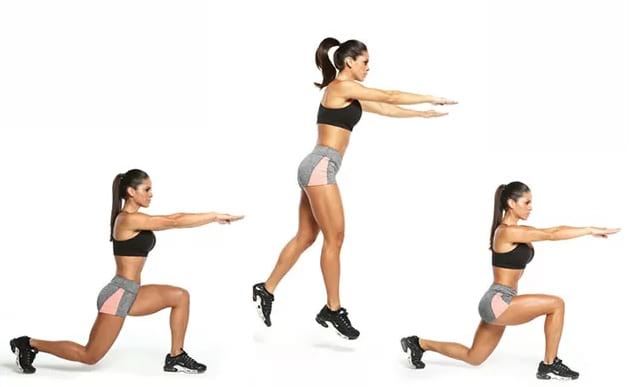
Switch up your training today by adding some Jumping Switch Lunges into your routine.
When you are first learning the Switch Lunge, practice your form with just your bodyweight. Over time when you feel you have nailed your form, you can add extra resistance with Dumbbells, Barbell(probably the hardest due to you having to balance the bar on your back while jumping), Kettlebells or a heavy-duty weighted vest.
Lunges are an undeniably useful leg training exercise, and with all the different possible variations there is no reason for you to get bored.
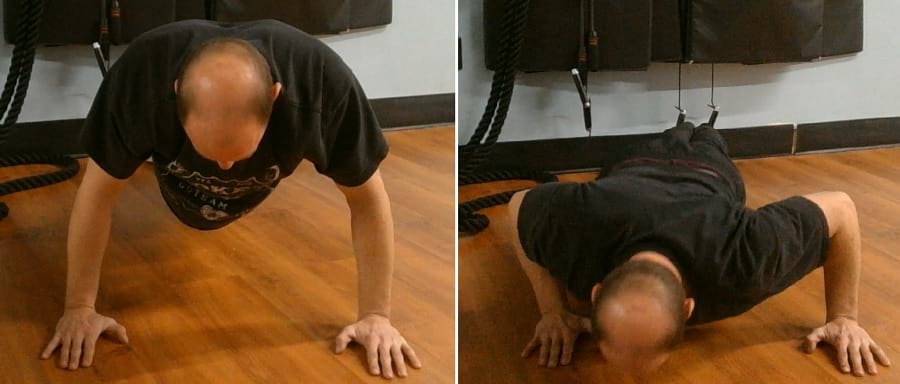
If you are looking to take your push-ups to the next level and place some additional focus on your shoulders then Side to Side push-ups are what you need to add to your routine.
Step 1: Lie face down on the floor with your body straight. Put your palms faceing down on the floor. Your fingers should be pointing straight ahead. You are going to use a slightly wider than shoulder width positioning.
Step 2: Extend at your elbows raising your body to the top of the push-up position. Your body should form a straight line from your head to your heels.
You are now in the starting position.

Step 1: Start by kneeling on the ground. You can use a weighted vest or barbell racked across your back to add extra resistance to this lift.
Step 2: Now sit back with your hips until your glutes are touching your feet. Make sure you keep your head up and shoulders pulled back and down.
Step 3: Now use your hips and explode upwards. You need to generate enough power so that you land with your feet flat on the floor.
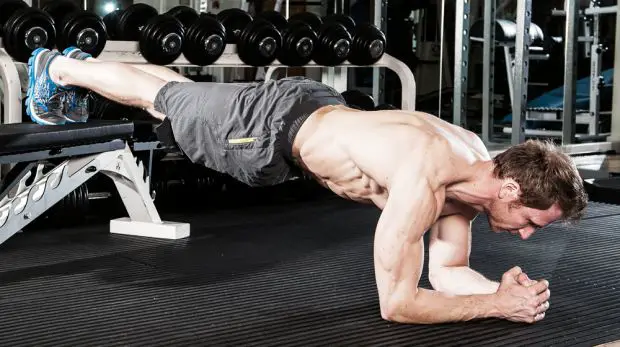
We are going to look at another Pilates/Calisthenics exercise. The Decline plank places a higher focus on your shoulders then the traditional plank version. While extra work gets provided to your upper body, unfortunately, this reduces the amount of tension put on your core.
This article will include a video, image and written step by step description on how to do the Bent Knee Hip Raise also commonly called the Reverse Crunch exercise.
Its difficulty level, the equipment you need to do it. The different muscle groups that get worked when you perform it.
The benefits you get when adding it to your training routine. Also, some different training cues to use when you are performing it.
Looking to gain more strength or lose some weight? We offer free fitness tools to help you reach your fitness goals. Register for free while we are in beta and get free lifetime access to our fitness tools that include an easy to use Calorie Counter, High-Intensity Interval Timer, Multiple Fitness Calculators and our Exercise Logger.